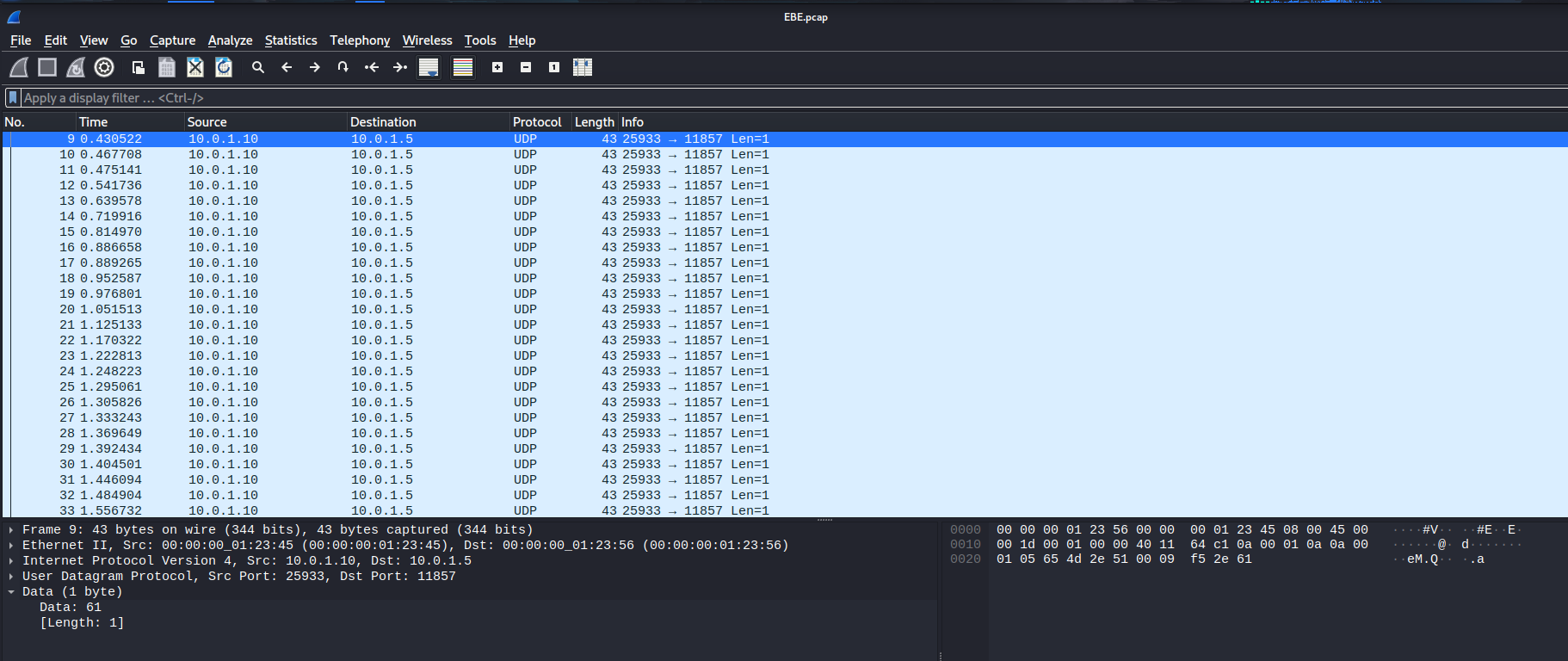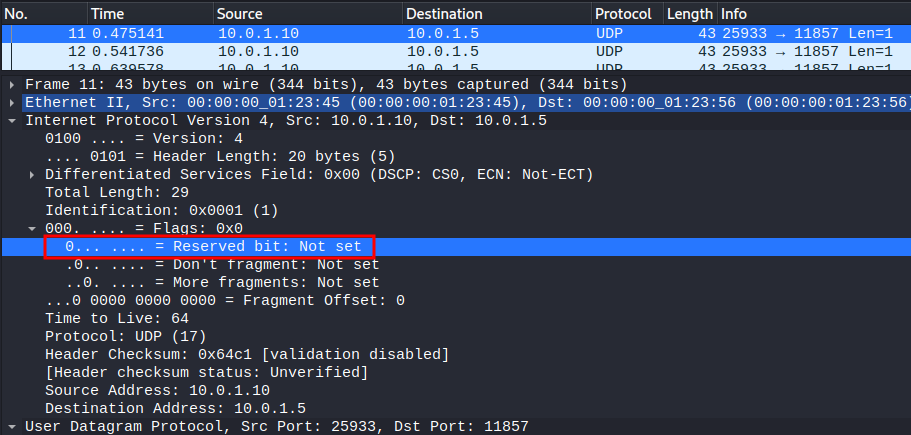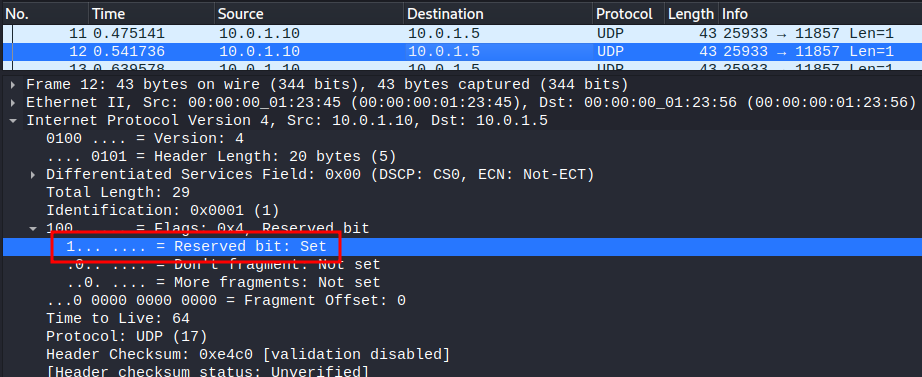EBE
Overview
-
Overall difficulty for me (From 1-10 stars): ★★★☆☆☆☆☆☆☆
-
426 solves / 183 points
Background
Author: burturt
I was trying to send a flag to my friend over UDP, one character at a time, but it got corrupted! I think someone else was messing around with me and sent extra bytes, though it seems like they actually abided by RFC 3514 for once. Can you get the flag?

Find the flag
In this challenge, we can download a file:
┌[siunam♥earth]-(~/ctf/LA-CTF-2023/Misc/EBE)-[2023.02.11|20:20:55(HKT)]
└> file EBE.pcap
EBE.pcap: pcap capture file, microsecond ts (little-endian) - version 2.4 (Ethernet, capture length 65535)
It's a Packet Capture file! Let's open it via WireShark:
┌[siunam♥earth]-(~/ctf/LA-CTF-2023/Misc/EBE)-[2023.02.11|20:20:57(HKT)]
└> wireshark EBE.pcap

As you can see, it's full of UDP traffics.
In the challenge's description, those UDP traffics are abided by RFC 3514.
The evil bit is a fictional IPv4 packet header field proposed in RFC 3514, a humorous April Fools' Day RFC from 2003 authored by Steve Bellovin.
If you look at the "Data" field, you'll see a 1 byte data:

However, if you take a look at the RFC 3514:
[...]
2. Syntax
The high-order bit of the IP fragment offset field is the only unused
bit in the IP header. Accordingly, the selection of the bit position
is not left to IANA.
Bellovin Informational [Page 1]
RFC 3514 The Security Flag in the IPv4 Header 1 April 2003
The bit field is laid out as follows:
0
+-+
|E|
+-+
Currently-assigned values are defined as follows:
0x0 If the bit is set to 0, the packet has no evil intent. Hosts,
network elements, etc., SHOULD assume that the packet is
harmless, and SHOULD NOT take any defensive measures. (We note
that this part of the spec is already implemented by many common
desktop operating systems.)
0x1 If the bit is set to 1, the packet has evil intent. Secure
systems SHOULD try to defend themselves against such packets.
Insecure systems MAY chose to crash, be penetrated, etc.
[...]
Armed with above information, If the IP "Reserved bit" is set to 1 (0x1), it's an evil packet:


Hence, to extract the flag, we need to find all the not set Reserved bit!
To do so, I'll use tshark, a command line version of WireShark:
┌[siunam♥earth]-(~/ctf/LA-CTF-2023/Misc/EBE)-[2023.02.11|20:53:46(HKT)]
└> tshark -r EBE.pcap -Y "ip.flags.rb == 0x0" -T fields -e data | xxd -r -p
lactf{3V1L_817_3xf1l7R4710N_4_7H3_W1N_51D43c8000034d0c}
Nice!
- Flag:
lactf{3V1L_817_3xf1l7R4710N_4_7H3_W1N_51D43c8000034d0c}
Conclusion
What we've learned:
- Extracting Evil Bit's Hidden Data